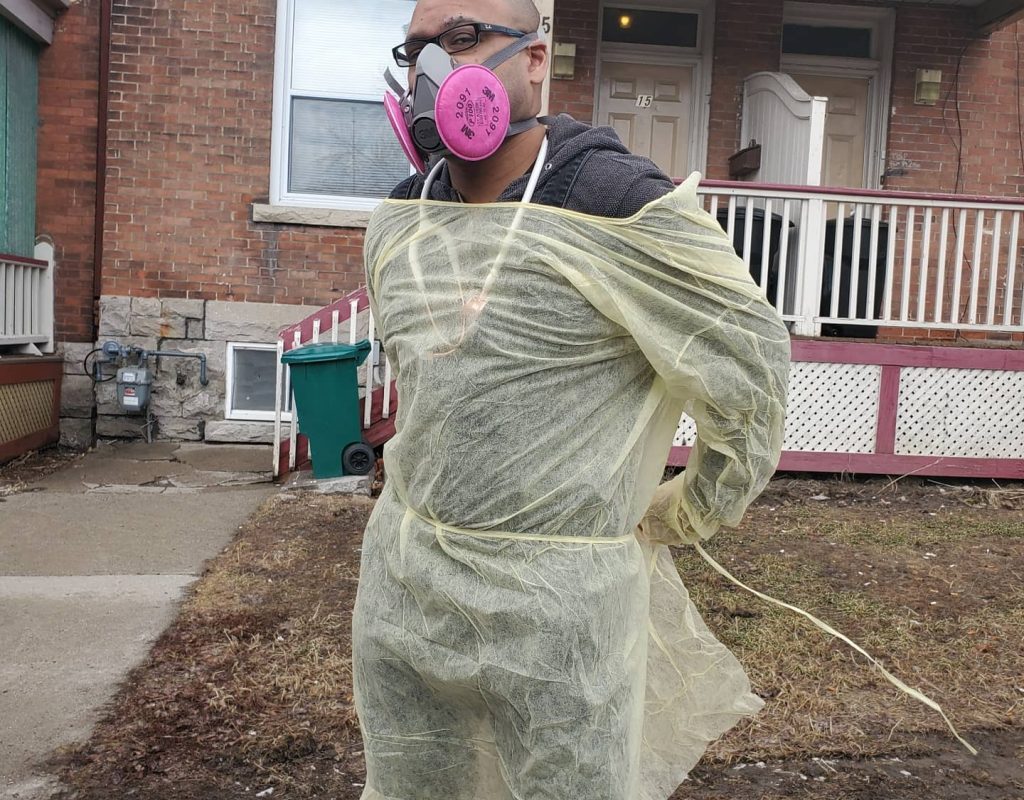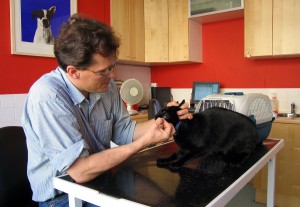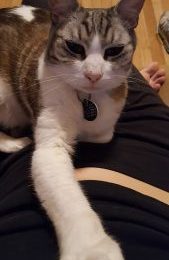Four years ago, I met Kris Chandroo – a veterinarian with a passion for cats and low-stress handling (not to mention also a scientist and musician)!! I interviewed him previously on my blog about his program (Stress to Success) on medicating “challenging” cats. We became fast friends, and since then it’s been exciting to watch where he has taken cat (and dog) care. I spoke with him last week about his new mobile practice, 100x Vet because I was so impressed with their approach to practicing medicine in the time of coronavirus. It’s a long read, but I hope you will enjoy it!!
It’s been FOUR years since I first interviewed you about Stress for Success! A lot has happened since then…
I’ve changed how I’m interacting with people and their pets. When I did STS I was still working in a brick and mortar clinic. Now we are mobile and on the road!
First, I’d love to hear about the Cuban Experience. What is the purpose – to bring supplies to the vets there, to provide training for vets, provide medical service?
It started with my dad – he loves the country, he’s not a vet, he sells cars, but he has a super soft spot for cats and dogs. So he was going there twice a year, had met vets, connecting people. I’d never seen my dad do anything like this! One year he invited me to come down, and he invited me to meet the vets there. The experience we had, oh my god, bringing it back to…what’s it all for. How do people in a different culture feel about cats and dogs when they have so many of their own problems? Turns out they feel the same way we do.
In Cuba, to get ahead, you open your own shop. Everyone’s hustling. The second they make a little more, the first thing they go to access is veterinary care. There are these pop-up clinics, in a garage, no sign. Then a line of people with dogs and cats.
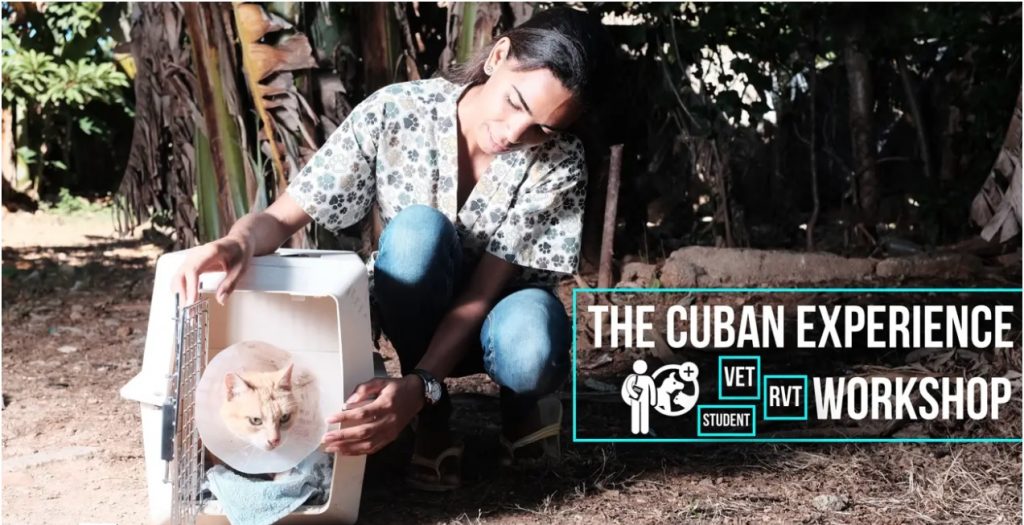
Were the needs for veterinary care basic, like vaccines and spay/neuter?
Even though internet is highly controlled there, people will still google everything about their pet, and they had questions about supplements, and medical disease. They had high expectations and in-depth questions, even though they couldn’t get food regularly for themselves with shortages. I assumed it would just be antibiotics, parasites, skin issues. Soon we’re bringing down equipment, microscopes, doing diagnostics, medical problem-solving.
What are your goals for the veterinarians who participate?
The team is everything from human nurses, vet techs, students, and vets of course. Everyone finds their role and expands on it. We’ve even had clients come with us. It’s unspoken teamwork. We form a unit. We would go to 3-5 clinics a day, drop off supplies. It might be a surgery day. So many people from different walks of life. There’s so much to reflect on. I haven’t met anyone who didn’t come back from that and didn’t reevaluate their own situation of where they were back home.
It sounds like you’re going in – integrating with the community, not just like “step aside, we’ll take care of your problem”
That was my dad – his question was always, how can I help? He built all that trust. It is to serve their needs, not any other agenda.
Where can people go to learn more?
They can go to: iwillhelpyourcatcourses.com. This year, we were set to go, we had a sponsor, we had a crew of 10 or 12 of us ready to go down on April 19th and then life happened with coronavirus. We are planning to pick it up in 2021. I’m so sorry we can’t bring supplies there this year.
What I’ve been itching to ask you about is your mobile practice 100x Vet. What made you and Tarra decide to leave your brick and mortar practice to go in a different direction?
The inspiration was coming to a new awareness – I had a medical issue where my retina blew out. Everything suddenly looked crooked in one eye. I went to the optometrist in the mall. She got quiet and said, uhmmm, you should go to the hospital. Friday my eye went bad, Monday I was in surgery. I had some ideas about approaching medicine differently and the eyeball took me there in a hurry. I was out of it for months and couldn’t work at the clinic. I’d get headaches when I moved by head, and I looked like a zombie. I decided to just go with the flow, we got the mobile made and licensed, and went for it.
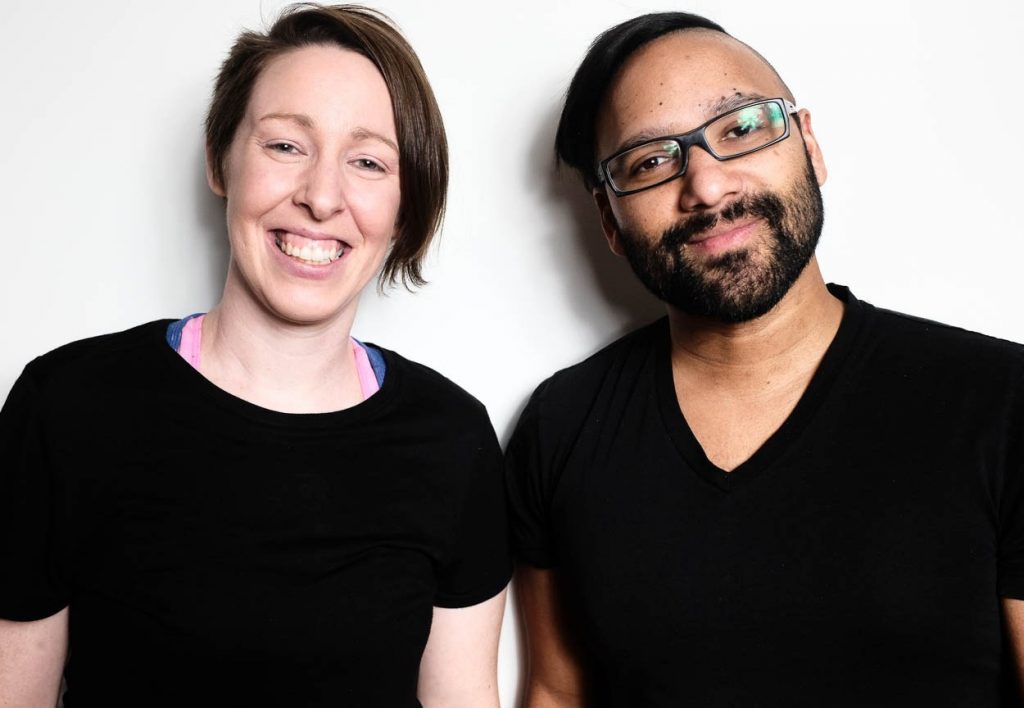
What was the inspiration for the name 100x Vet?
For every pet we see in real time, we strive to help 100 more through education, making videos, and working in Cuba.
You and Tarra worked together at a clinic.
Yeah, we met each other at a clinic we both worked at in Ottawa. We also worked together on Stress to Success, which was our acid test for working together in close quarters for long periods of time. It worked.
What made you decide to go mobile instead of opening your own clinic?
As vets in a clinic, you’ve got 15-30 minutes to assess a pet and try to not make it scary for them. Cats don’t live in that time zone. It can take them that long for their heart rate to slow down and for their pupils to stop dilating.
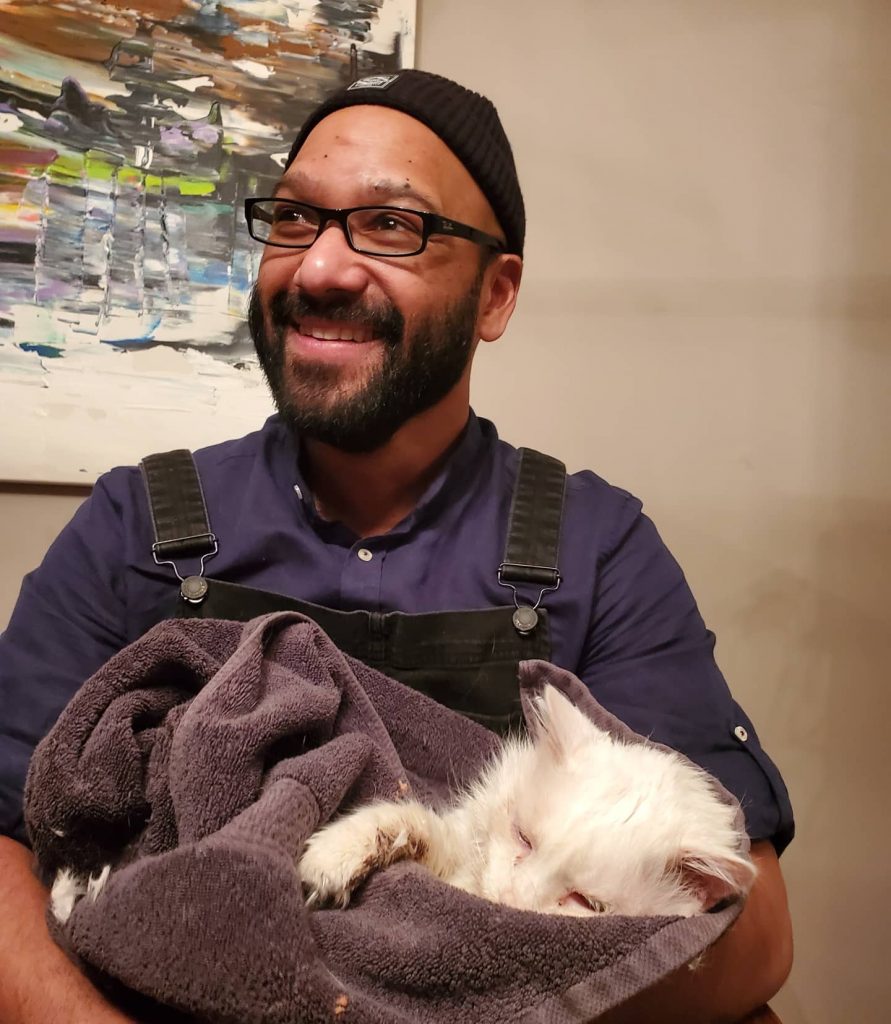
I was interested in how I could take the way I practice medicine and evolve it to the needs of people and their pets. Our philosophy is we don’t treat animals, we treat relationships, and that takes time. Now, I can show up and sit in your living room, have coffee, talk for 15-20 minutes before I even LOOK AT your pet. And that kind of thorough discussion in and of itself reveals so much about what challenges their cat is facing. Their cat might come up to me. Step by step we can bridge that gap. Then any diagnostic exam and low stress approaches – I enjoy it, and my client enjoys it so much more. Instead of inherent stress and conflict, it’s about growth and evolution. It’s changed the practice of medicine for me on all levels. And the ways that cats and dogs feel about it is different as well.
So much of what triggers fearful behaviors at the vet – are these learned associations – the carrier, the drive to the clinic, the smells and sounds at the clinic. Those things are telling the cat or dog you are about to have a bad experience, so prepare for fight or flight now.
As vets, we are trying to get this done whether the cat is ready or not. Many vets are compassionate about that, but there are four people waiting in line. Mobile care allows the time that fits the psychology of the pet. We are working toward their needs instead of forcing them to work within the institution’s needs. It’s like children in school, there can be problems, but it’s not that the child has a problem. It’s the institution.
I can’t tell you how many people come to us in tears because their pet has been banned from a hospital, I get it, not blaming the hospital, I get the pressure cooker. I have x amount of time to solve a problem, the pet is already red-lining, and I have 2 more critical pets in line. But pets go from being muzzled, called “mean”, “aggressive” to coming up to you, and then you can start counter-conditioning to touch.
What have you learned about clients from going into their homes? What informs you as a doctor?
All of a sudden, if you think you’re on a pedestal, that will go out the window. You are a guest in someone’s home, which is going to affect how you conduct yourself and how it feels. The environment fosters an appreciation of who the pet is, when you’re coming to the pet from a perspective of wholeness, versus problem-solving and a lack of time, it changes how the interaction feels for EVERYBODY.
I’ve learned from talking about this with you before – the term enrichment is crappy – what does it really mean? Deconstructing that – what does it mean from the cat’s perspective? Nothing brought that together in a more impactful way than walking into my first consult in a client’s home for behavior. When you’re in someone’s home, you can walk around, see it all. We now do the “pee and poop tour”, we do a vantage point check off. I put it terms of natural behavior from your cat’s perspective, and does your home support that?
I think that reflects where the field is going. The term enrichment implies that it’s a bonus, instead of environmental requirements. If we call a toy enrichment, therefore it’s not as essential, like litter boxes and food and water.
Exactly. It’s not a bonus. It’s the base layer of naturalized behavior and care.
I was trying to do a research project that involved home veterinary exams. I was trying to find guidelines or protocols for a home visit, and I couldn’t find anything. The vet schools don’t bring this up. Even simple things, like having an ID or taking your shoes off, or working with another person. The only resources were the hospice and in-home euthanasia practices. Given that there isn’t much information out there, how did you figure out how to make this work? Some vets who do a home practice treat it like a regular clinic visit. The cat is confined in the bathroom, you go in and get it done. Do you have any suggestions for other vets who might be interested in doing a mobile practice?
You’re right, there are zero resources on how to do it. The only training you get in vet school is related to equine and dairy.
The easiest thing to do would be to say, I’m just going to take what I did in my practice and convert that to being in someone’s home. But that’s a missed opportunity in terms of where medicine can go for pets. We’re working with a relationship with a non-verbal pet who has opinions. We can respect that.
The other thing was, what did we want for ourselves? Did we want to be 30 minutes in and out, then running around town, 10-15 times a day? That’s a recipe for burn out. If we burn out, then we can’t be present in mind for our patients.
Our standard now is 90-minute appointments, and it goes by fast. And we need to remember that every veterinary appointment should be treated like a behavior appointment. The industry isn’t there yet. Fear Free is trying. Why did it take so long for us to have something like Fear Free? The veterinary institution thinks about what we do in a very specific, hierarchical way. You can feel it in the words we use, like “compliance.” Switching to a non-judging, non-labelling look at the individual’s internal need, and putting our philosophy about life at the top.
When we started, people assumed all we could do was vaccines and euthanasia. It took some marketing and video to let people know that’s not just what we do. It’s about 80% medicine, problem solving and coaching.
So you decided to do a YouTube channel!
I love making videos. We decided that if someone needed help, and they had a relationship with their pet, and they couldn’t afford our rates, we decided we wanted to help. If that person agreed to have that experience filmed, we could create something educational that would let people know that you might be experiencing the same problems, you can get help. People became more aware of what a house call could be like. It isn’t clinical, we’re not taking your pet out to our car. We stay in your home where your pet wants to be.
What is easier and harder about having a mobile clinic?
If I talk about technical things – blood pressure is easier and more accurate. But I would say EVERYTHING has gotten easier, from initial conversations to meeting pets and people where they are at, no time crunch…what is harder? Logistically, man if you had food intolerances you will sort them out real fast! I mean for Tarra (my RVT) and I. You want a gut that is feeling good. Peeing in someone’s home…I had one experience where I had to go pee and the client had a big problem with it. She didn’t want me to go unless I would sit down on the toilet seat. I politely just held it in lol.
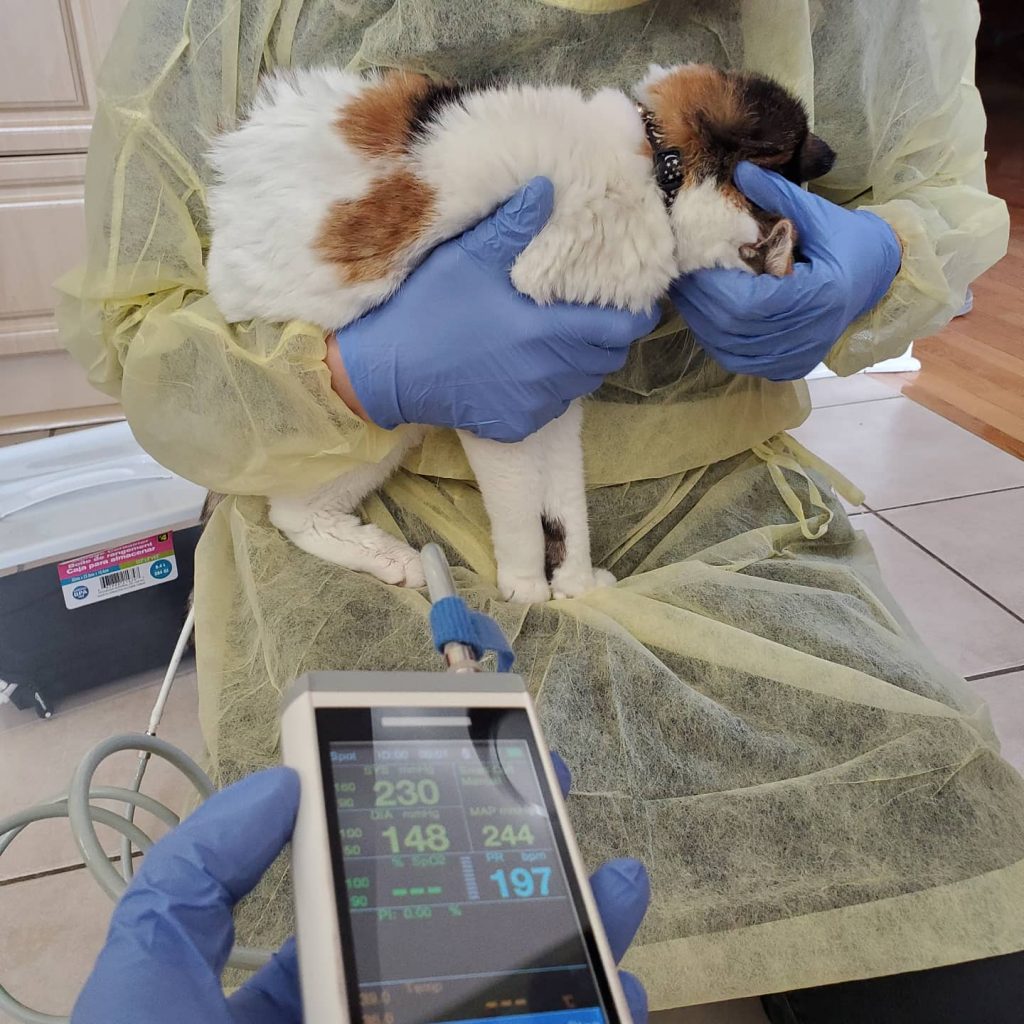
You only have to live with one guy with bad aim. Guys are slobs. You know those weird rugs around the toilet…there’s a reason those exist and it’s bad.
It’s true. Guy bathrooms are notorious.
So now we’re in a pandemic. How are you keeping your business going, assuring clients that their pets will get medical care while staying safe in this scary time?
It was mid-February, I saw the word exponential being tossed around. As a vet, thinking about infectious disease control, you need to have protocols ready. It had nothing to do with politics, or managerial opinions. It was midnight, and I just started researching, what would I do to keep going? What could I do to keep my family safe?
I made a few assumptions, that fit in line with what I would do anyways. Accepting asymptomatic transition was one. How could I provide care to others, AND keep them safe and vice versa? So I started ordering PPE, hats, gowns, eyewear. At that point all of the N95 respirators were already gone. But I found I could get NIOSH approved P100 respirators, with reusable, washable masks that could be disinfected.
Then I thought about aerosolization of droplets. That means no contact. We are going to help your pet but we’re not going to see you. And the third way – touching something in your environment, then touching your face. People were freaking out about getting hand sanitizer, but the gold standard is hand WASHING. We built a handwashing station for the back of our mobile, so we could wash on the streets, instead of someone’s home or a fast food joint.
When things started to heat up a few weeks ago, things got real for so many people. The most tragic way was, we got a lot of calls for euthanasia, and people who were quarantined and couldn’t leave their home. Or people who could leave their home but knew the last time they would see their pet would be in a carrier as I pass it through their car door. That hit people in a way that was rough.
Tarra and I were like, this can’t happen. We figured out step-by-step how we could do a euthanasia with dignity, the animal is with their people, while Tarra and I are absent. It involves phone calls, 8-foot IV lines, other equipment. The pet is inside with their person and we are on the other side of a door administering medication from a distance. We walk in, we give sedation, we leave the room. We call the owner and they can be with their cat as he falls asleep. As far as the cat knows, nothing has changed. All they know is all they’ve ever known, there’s nothing new or stressful.
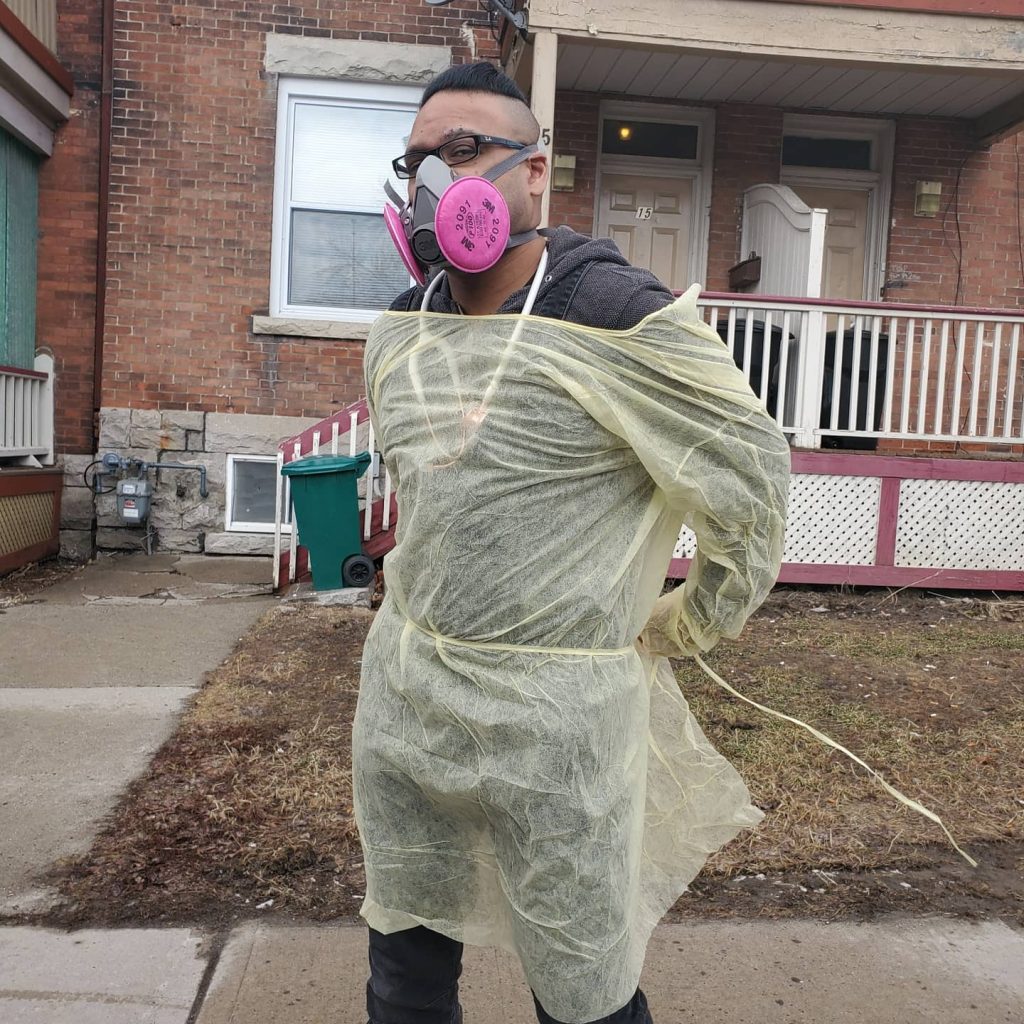
To innovate solutions like that is so great.
People have appreciated it. Euthanasia is the first thing to have suffered because of this. It’s super emotional. The pandemic has hit, how do we problem solve as a society to preserve relationships? And my advice to everyone – it’s 20% being prepared in all the ways you can, and the realization that for all the rest, it’s hands off the wheel. No resistance to change. Children and pets are masters of this. Not having anxiety for the future, not regretting their past. Just being present, in the moment. Whatever that moment brings.
So for us, we wash our hands frequently. When in doubt, wash them out. It’s not controversial for us to wear masks. It’s just basic science. We have a protocol for anything coming in or out of our homes, including vet supplies, mail or groceries. Clothing, cellphone, keys. Anything that could act as a fomite. Once all of that is in place, the rest of life is still here. Just ask any cat.
All photos provided by Dr. Kris Chandroo.

